Welcome, new plant parent. If you are here, you have likely been captivated by the beautiful, sculptural allure of succulents. Their plump leaves, fascinating shapes, and stunning colors make them irresistible. But you might also be nervous. You have heard the stories. “I just looked at it and it died.” or “I have a brown thumb.”
Let us reassure you. Everyone starts somewhere, and the secret to early success is choosing the right plants. Not all succulents are created equal, especially when it comes to forgiving a beginner’s learning curve. The key is to start with the champions of resilience.
This guide is dedicated to the absolute easiest succulents for beginners. These are the plants that will tolerate a little overwatering, survive a period of neglect, and still reward you with incredible growth. We will provide you with everything you need to know to not just keep them alive, but help them thrive.
Dig in!
Why Start with Easy Care Succulents?
Choosing the right succulents for beginners is crucial for building your confidence. These plants offer several benefits. They are more forgiving of the most common beginner mistakes, primarily overwatering. They give clear visual feedback. They show you when they need water with wrinkled leaves and when they are happy with plump, firm growth. Many of these varieties grow quickly and propagate easily, giving you a satisfying sense of accomplishment. Finally, mastering these plants will teach you the fundamental care skills that apply to almost all succulents. This knowledge sets you up for success with more advanced varieties later.
The Golden Rules of Succulent Care (The Basics You Need to Know)
Before we meet our top 10 champions, let us establish the non negotiable rules for keeping your new succulents for beginners happy. Think of this as your succulent survival handbook.
1. The Right Soil is Everything
This is the most critical factor. Succulents despise sitting in wet soil. They need a mix that drains incredibly fast. You must avoid standard potting soil. It retains too much moisture and will lead to root rot. Instead, use a specialized succulent and cactus mix. These are readily available at garden centers and are formulated with sand, perlite, and pumice to ensure water flows through quickly. For even better drainage, you can mix your store bought succulent soil with additional perlite at a 50:50 ratio. This is a game changer for beginners prone to overwatering.
2. Master the “Soak and Dry” Watering Method
Forget watering on a schedule, for example, every Tuesday. Water based on your plant’s needs. The method is simple. When you water, do so thoroughly. Pour water evenly over the soil until it runs out of the drainage hole in the bottom of the pot. This ensures the entire root system gets hydrated. Then, walk away. Do not water again until the soil is completely, totally dry. You can check this with your finger or a wooden chopstick. The leaves will also tell you. Many succulents will get slightly wrinkled or soft when thirsty. The frequency can vary. This could mean watering every 7 to 10 days in a hot, dry summer, or every 4 to 6 weeks in a cool, dark winter. Let the plant, not the calendar, guide you.
3. Provide Plenty of Light
Most succulents crave bright, indirect light. Some can handle direct sun. An ideal spot is a south or east facing windowsill. A sign of not enough light, called etiolation, is when your plant starts stretching out. It will have long stems and widely spaced leaves because it is begging for more light and reaching for the sun. A sign of too much light is sunburn. Sudden, intense direct sun can cause this, which appears as brown or white scorched marks on the leaves. Always acclimate plants to direct sun gradually.
4. Choose Pots with Drainage Holes
This rule is simple but vital. Always use a pot with a drainage hole. It allows excess water to escape, preventing the soil from becoming a swamp that will rot the roots. Ceramic, terracotta, and plastic pots are all fine as long as they have that hole in the bottom.
Now, let us meet your new best plant friends. These are the ultimate succulents for beginners.
The Top 10 Succulents for Beginners
1. Jade Plant (Crassula ovata)
The Jade Plant is the classic, timeless champion of beginner friendly plants. They are practically indestructible and can live for decades, even being passed down through generations. It is great for beginners because it is incredibly forgiving of occasional over and underwatering. It grows slowly and steadily, providing reliable feedback. It has a tree like appearance with thick, woody stems and glossy, oval shaped, jade green leaves. It can develop a red tint on leaf edges with plenty of sun. For care, it prefers bright light. Water when the top inch of soil is dry. Terracotta pots are excellent for helping soil dry out faster.
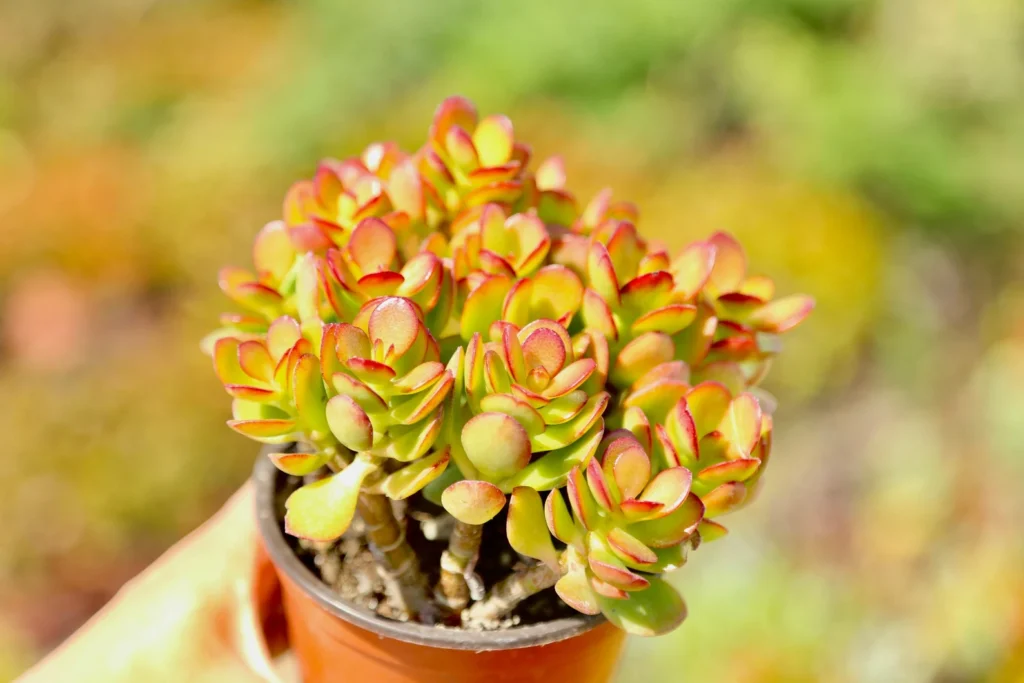
2. Snake Plant (Sansevieria trifasciata)
Also known as Mother in Law’s Tongue, this plant is a legend for a reason. It thrives on neglect. It is great for beginners because it is virtually impossible to kill. It tolerates very low light and infrequent watering. It is also an excellent air purifier. It has tall, upright, sword like leaves with striking green patterns and yellow borders. There are many varieties, from tall to short. For care, it does well in almost any light condition, though it prefers medium indirect light. Water very infrequently. Only water when the soil is completely dry all the way to the bottom of the pot. It can go a month or more between waterings.
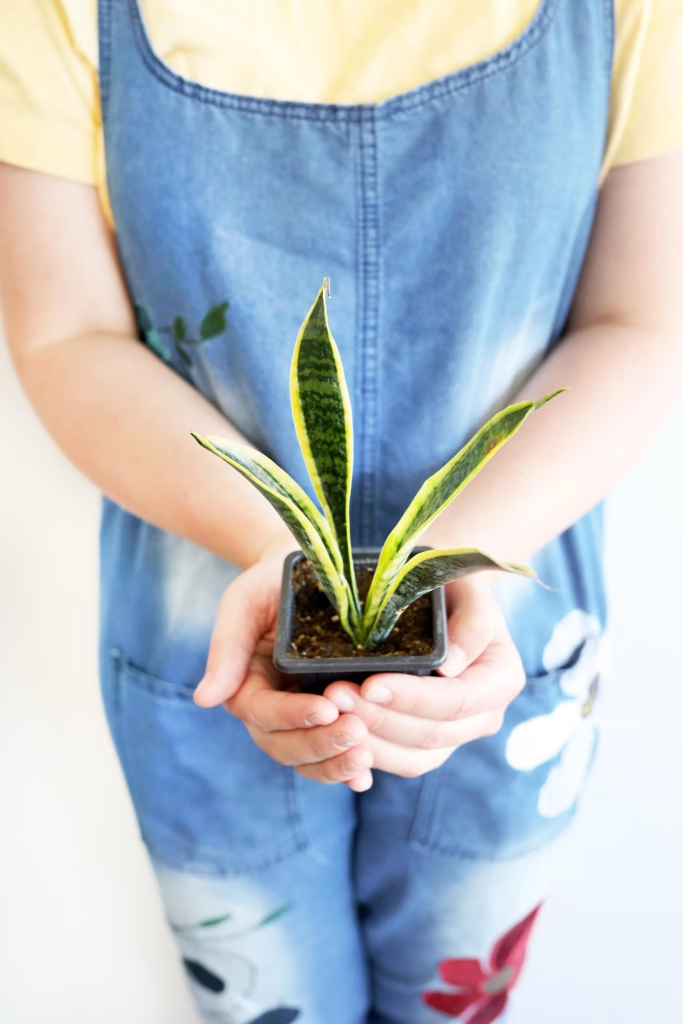
3. Zebra Haworthia (Haworthiopsis attenuata)
This small, striking plant is perfect for desks and small spaces. It looks exotic but is incredibly easy going. It is great for beginners because it has low light needs compared to other succulents and is very slow growing, meaning it rarely needs repotting. It forms a rosette of dark green, pointed leaves covered in raised white bumps that look like zebra stripes. For care, it prefers bright, indirect light. Direct afternoon sun can scorch its leaves. Water when the soil is completely dry.
4. Echeveria (Various species)
This is the plant you most likely picture when you think of a succulent. They are beautiful, rose shaped rosettes. While some can be fussy, common varieties like ‘Perle von Nurnberg’ or ‘Imbricata’ are fantastic succulents for beginners. They are great for beginners because they provide perfect practice for light and watering needs. Their shape clearly shows if they need more light by stretching. They have tight, symmetrical rosettes in colors ranging from green to blue, purple, and pink. For care, they need several hours of bright, direct light daily to maintain their compact shape. Water only when the soil is fully dry, and avoid getting water in the rosette.
5. Aloe Vera (Aloe barbadensis miller)
This is a beautiful and useful plant. The gel inside its leaves can be used to soothe minor burns and skin irritations. It is great for beginners because it is fast growing and very tolerant. It readily produces “pups,” or baby plants, which you can separate and pot up. This makes you feel like a pro propagator. It has a rosette of thick, fleshy, serrated green leaves that grow upright. For care, it prefers bright, indirect light. Water deeply but infrequently, allowing the soil to dry out completely between waterings.
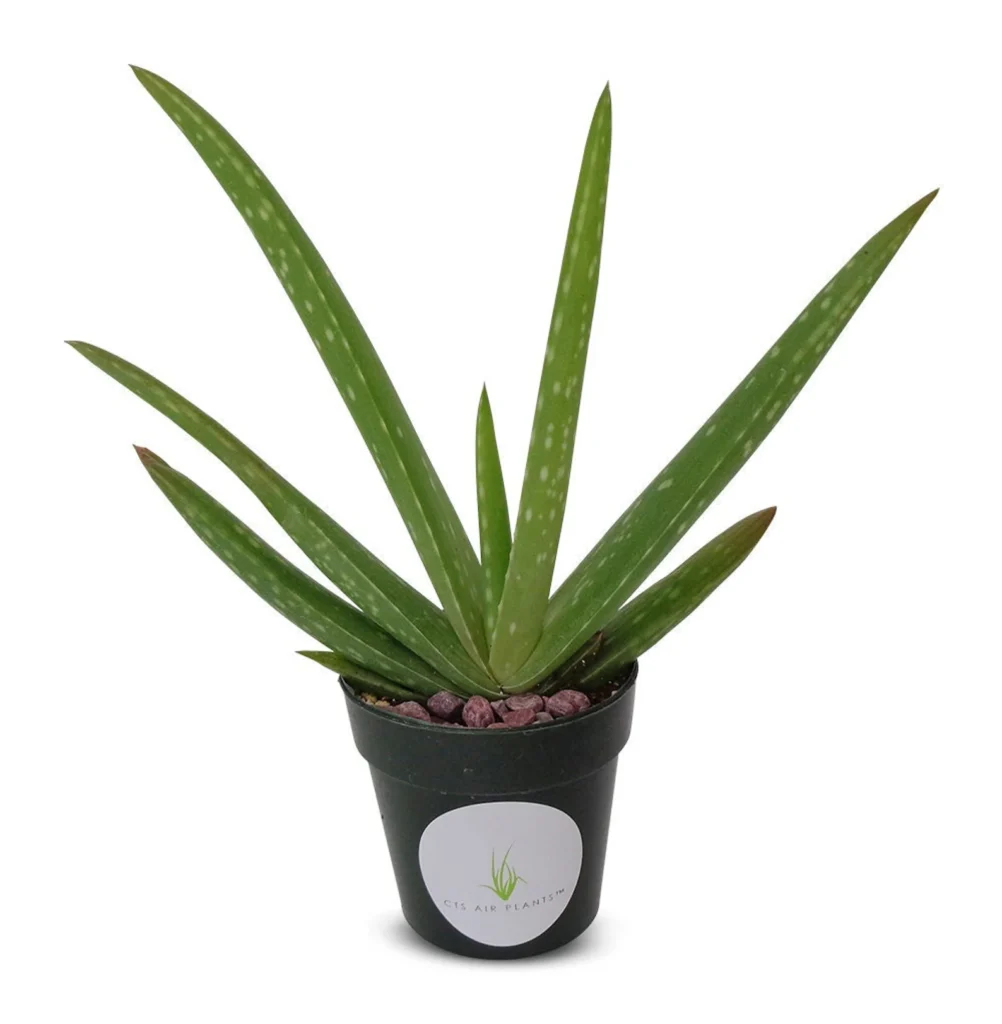
6. Burro’s Tail (Sedum morganianum)
This is a stunning trailing succulent perfect for hanging baskets or high shelves where its beautiful stems can cascade down. It is great for beginners because it is drought tolerant and has a unique, beautiful growth habit that is very rewarding. It has long, trailing stems densely packed with plump, blue green, tear drop shaped leaves. For care, it loves bright light. The leaves are very fragile and can drop easily if handled, so find it a spot and leave it be. Water when the soil is dry.
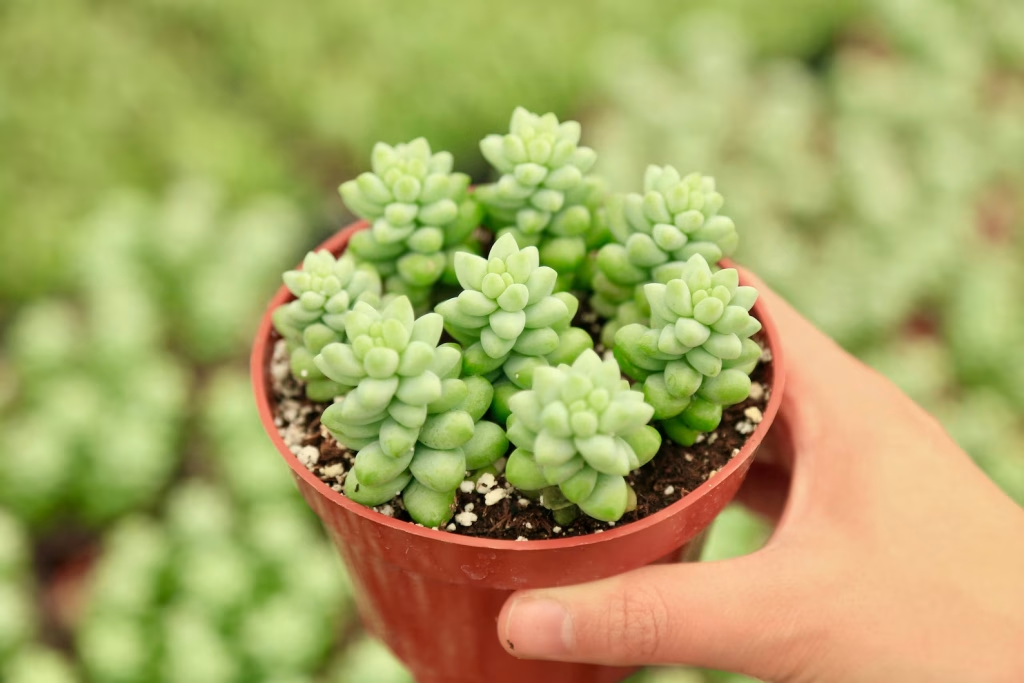
7. Panda Plant (Kalanchoe tomentosa)
This is an adorable, fuzzy succulent that is as soft as it looks. It is a slow growing and charming plant. It is great for beginners because the fuzzy leaves are a great indicator of thirst. They will get soft and bendable when they need water. It has upright stems covered in fuzzy, silvery green leaves with dark brown spots on the edges. They resemble panda paws. For care, it prefers bright, indirect light. Avoid getting water on the fuzzy leaves, as this can cause rot. Water based on soil dryness and leaf softness.
8. Ponytail Palm (Beaucarnea recurvata)
Despite its name, this is not a palm at all. It is a member of the agave family and a wonderfully quirky and easy plant. It is great for beginners because of its large, bulbous base, called a caudex, which stores water. This allows it to go for weeks without a drink. It is incredibly drought tolerant. It features a large, bulbous brown base and long, thin, curly green leaves that cascade out from the top like a ponytail. For care, it prefers bright light. Water very infrequently. The caudex will feel soft if it needs water and hard when full. Err on the side of underwatering.
9. String of Pearls (Senecio rowleyanus)
This is another gorgeous trailing plant for beginners that is sure to spark conversation. It looks like a string of green peas. It is a great first “string” plant for beginners who want a challenge. While it has a reputation for being finicky, understanding its needs makes it manageable. It has long, thin vines adorned with spherical, pea shaped leaves. For care, it prefers very bright, indirect light. The pearls will start to shrivel when they need water. Water when the soil is dry, but do not let it sit bone dry for too long.
10. Ghost Plant (Graptopetalum paraguayense)
This is a resilient and beautiful succulent that changes color with the seasons, offering a beautiful show. It is great for beginners because it is exceptionally hardy. It tolerates both heat and cold better than many succulents. It also propagates from a single leaf with incredible ease. It forms rosettes with thick, fleshy leaves. Its color ranges from a pale blue gray, giving it a ghostly appearance, to pinkish yellow in bright sun. For care, it thrives in full sun to partial shade. Water using the “soak and dry” method.
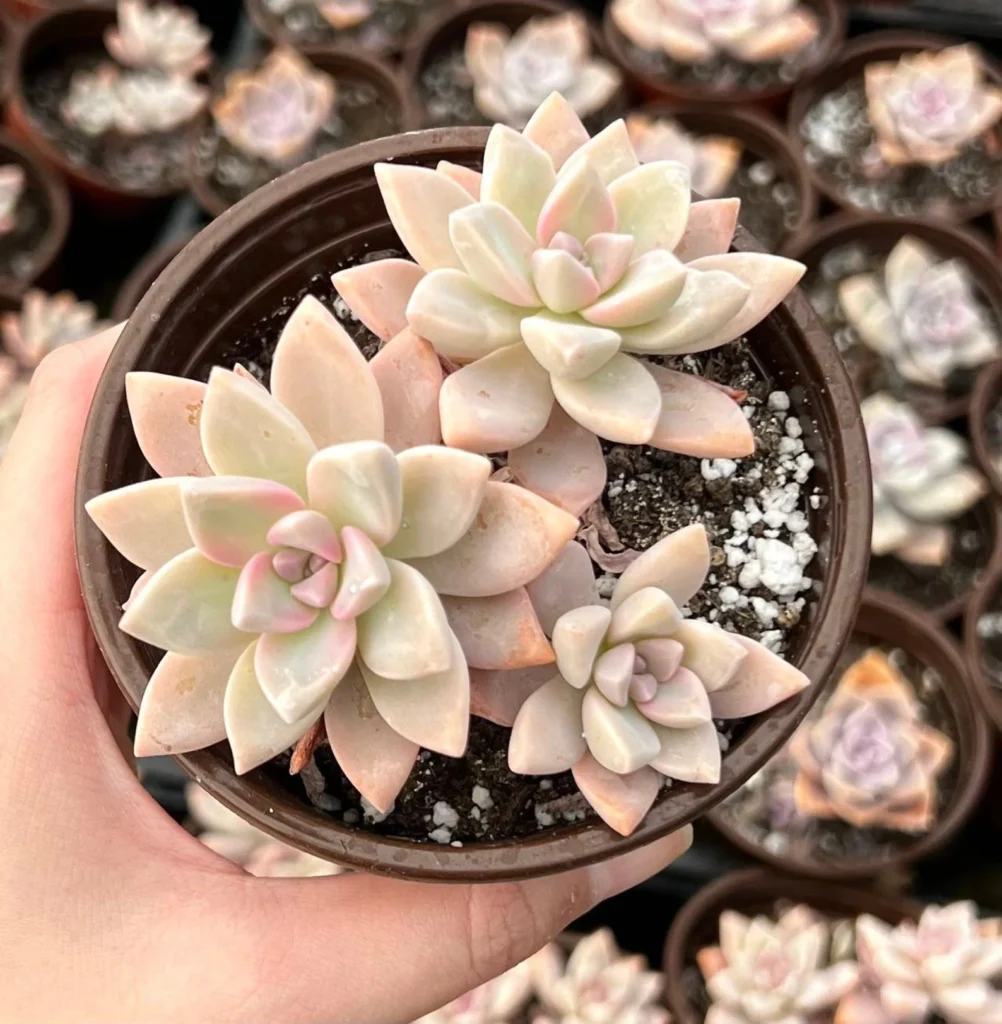
Your Beginner Succulent Starter Kit: A Shopping List
Before you head to the nursery, here is what you need.
- The Plants. Choose from our list above.
- Pots. Make sure they have drainage holes. Terracotta is excellent for beginners.
- Potting Mix. A bag of succulent and cactus mix.
- Perlite. This is optional but recommended to mix into your soil for extra drainage.
- A Watering Can with a Long, Narrow Spout. This helps you water the soil directly, not the leaves.
Troubleshooting Common Beginner Problems
Even with the easiest succulents for beginners, you might hit a snag. Here is how to fix it.
- Problem: Mushy, Translucent Leaves and Falling Off
- Cause: Overwatering. The roots have rotted.
- Solution: Stop watering immediately. Remove the plant from its wet soil. Cut away any black or mushy roots, and let it dry out for a few days before repotting in fresh, dry soil. Wait a week before watering again.
- Problem: Wrinkled, Shriveled Leaves
- Cause: Underwatering.
- Solution: Give the plant a thorough, deep drink. The leaves should plump up within a day or two.
- Problem: Stretched Out, Leggy Growth
- Cause: Not enough light. This is called etiolation.
- Solution: Move the plant to a brighter location. You cannot fix the stretched growth, but you can propagate the top part of the plant to start over.
- Problem: Brown, Crispy Spots on Leaves
- Cause: Sunburn.
- Solution: Move the plant to a location with bright but indirect light. Acclimate plants to direct sun slowly over a few weeks.
Final Words of Encouragement
Embarking on your plant parent journey with these succulents for beginners is one of the best decisions you can make. These plants are teachers. They will show you what they need. In caring for them, you will learn not just about horticulture, but about patience and consistency.
Do not be afraid to make mistakes. Every brown thumb can become green with a little knowledge and the right plants. Start with one or two from this list. Master their care, and watch your confidence and your plant collection grow.
Happy planting.
